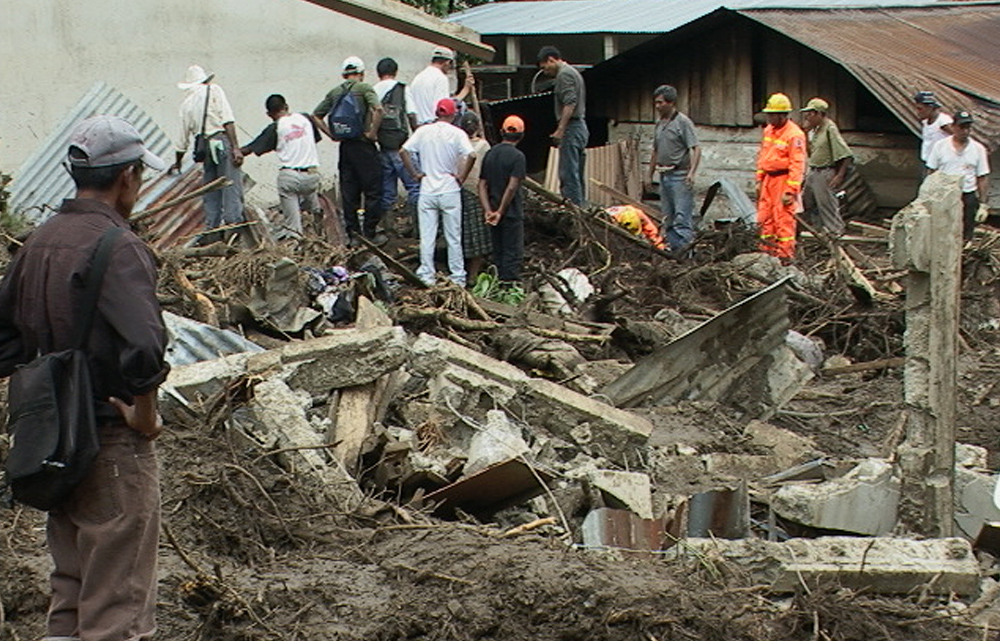
Disaster, as defined by the UN, is a severe interruption of the functioning of a community or the social order, which involve widespread human, material, economic or environmental effects that surpass the capacity of the affected community or society to manage using its own resources. Disaster management is how one copes, predicts or tries to minimize the human, material, economic or environmental impacts of a disaster, it is the procedure of how we “prepare for, respond to and learn from the effects of major failures”. Though every so often caused by nature, disasters can also have human sources. Natural disasters and armed conflict have marked destructive presence throughout history and have always caused marked increase in mortality and morbidity.
(VULNERABILITY+ HAZARD) / CAPACITY = DISASTER
Types of Disaster
Natural Disasters
Natural Disasters are naturally occurring physical phenomena instigated either by swift or slow onset events that have instantaneous influences on human health and secondary effects causing additional death and grief. These disasters can be of the following types:
- Geophysical (e.g., Earthquakes, Landslides, Tsunamis and Volcanic Eruptions)
- Hydrological (e.g., Avalanches and Floods)
- Climatological (e.g., Extreme Temperatures, Drought and Wildfires)
- Meteorological (e.g., Cyclones and Storms/Wave Surges)
- Biological (e.g., Disease Epidemics and Insect/Animal Pestilences)
Man-Made Disasters
Man-Made Disasters are events that are caused by humans which occur in or adjacent to human settlements often triggered as a consequence of Environmental or Technological Emergencies. This can comprise:
- Environmental Degradation
- Pollution
- Accidents (e.g., Industrial, Technological and Transport usually concerning the production, use or transportation of hazardous goods)
Complex Emergencies
Some disasters can be outcome of numerous hazards, or, more frequently, to a complex amalgamation of both natural and man-made causes which encompass a break-down of authority, looting and attacks on strategic installations, including conflict situations and war. These can include:
- Food Insecurity
- Epidemics
- Armed Conflicts
- Displaced Populations
Complex Emergencies are typically marked by:
- Widespread Violence
- Movements of Populations
- Life Loss
- Extensive Damage to both Societies and Economies
- Requirement for Significant Humanitarian Support across Multiple Agencies
- Political and Military Restrictions which influence or foil Humanitarian Aid
- Amplified Security Perils for Humanitarian Relief Workers
Pandemic Emergencies
Pandemic is an epidemic of infectious disease that has spread across a great region, which can befall the human or animal population and may impact health and disturb services leading to economic and social ruin. It may be a rare or unforeseen upsurge in the number of cases of an infectious disease which already is present in a certain region or population or can also denote to the presence of a substantial number of cases of an infectious disease in a region or population that is generally free from that disease. Pandemic Emergencies may occur as a result of natural or man-made disasters. These have included the following epidemics:
- Coronavirus Disease (COVID-19)
- Ebola
- Zika
- Avian Flu
- Cholera
- Dengue Fever
- Malaria
- Yellow Fever

Phases of Disaster
The four phases of disaster are:
- mitigation;
- preparedness;
- response; and
- recovery.
MITIGATION
|
PREPAREDNESS
|
RESPONSE
|
RECOVERY
|
-
Mitigation
Mitigation involves steps to lessen susceptibility to disaster impacts such as injuries and loss of life and property & assets. This might include alteration in local building structures to fortify constructions; revised zoning and land use supervision; consolidation of public infrastructure; and other efforts to make the society more resilient to a calamitous incident.
-
Preparedness
Preparedness concentrates on knowing how a disaster might affect the community and how education, strategy and training can construct ability to respond to and recuperate from a disaster. This may comprise of engaging the commercial community, pre-disaster strategic preparation, and other logistical readiness activities. The disaster preparedness activities guide delivers more info on how to better prepare the society and the business community for an adversity.
-
Response
Response takes care of immediate threats presented by the disaster, including saving lives, provisioning for humanitarian requirements (food, shelter, clothing, public health and safety), clean-up, damage assessment, and the initiation of resource distribution. As the response period develops, focus moves from dealing with instant emergency problems to conducting repairs, re-establishing utilities, resuming operations for public services (including authorizing), and concluding the clean-up process.
- Triage efforts evaluate and deal with the most persistent emergency issues. This phase is mostly marked by some level of chaos, which can last a month or more, reliant on the nature of the disaster and the extent of damage. Government Resources and Non-Profit Relief Aid is deployed immediately.
- Business re-entry into the economy begins during this phase. Businesses primarily may face problems with entree to their site, initial damage evaluation, and communications with staff, vendors, suppliers and customers.
- Business Recovery Centres are rapidly set up in the affected area to consolidate small business recovery funds, local bank officers, technical support providers, and other significant aid for upholding business continuousness and/or get businesses up and working.
- Government resources as well as state plans, start to arrive; temporary housing plans are set-up; and the arrangement for the rebuilding of damaged infrastructure, facilities, and areas commences.
-
Recovery
Recovery is the 4th phase of the disaster management and is the restoration of all facets of the disaster’s effect on a community and the re-establishment of the resident economy to some sense of regularity. By this time, the affected area has attained a degree of physical, environmental, economic and social solidity.
